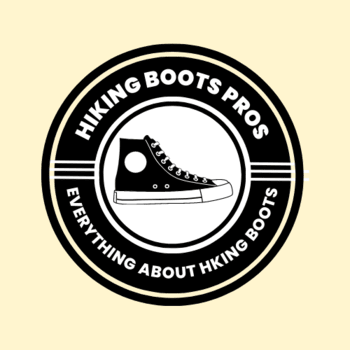Last updated on May 8th, 2023
Hiking boots are a crucial investment for outdoor enthusiasts who love to hit the trails. These boots not only provide comfort and support for your feet but also help you navigate through rugged terrains safely. However, after extended use, these boots can accumulate dirt and grime, which can affect their performance and longevity. Therefore, it’s essential to clean and maintain your hiking boots regularly.
In this blog post, we’ll discuss how often you should wash your hiking boots, the reasons why it’s necessary to clean them, and the factors that can affect cleaning frequency. We’ll also explore some effective cleaning methods for hiking boots.
How Often Should You Wash Hiking Boots?
When it comes to washing hiking boots, the frequency depends on various factors, such as how often you use them, the terrain you hike on, and the weather conditions. However, as a general rule of thumb, you should clean your hiking boots after every hike.
If you hike on a muddy or dusty trail, it’s best to clean your boots as soon as you get back. Leaving dirt and grime on your boots can lead to wear and tear, affecting their performance and shortening their lifespan.
Moreover, if you don’t wash your boots regularly, the accumulated dirt can cause them to smell bad, which can be unpleasant for you and others around you.
What Are Some Reasons to Clean Hiking Boots?

Cleaning your hiking boots is an essential part of proper hiking gear maintenance, and there are several good reasons why you should do it regularly. For starters, hiking boots accumulate dirt, mud, and other debris during the trek, which can not only make them look shabby but also weigh them down.
The accumulated dirt can also damage the boots’ material and cause it to wear out faster than expected. Moreover, hiking boots can develop unpleasant odors due to the accumulation of sweat and bacteria, which can be a major turn-off for your fellow hikers. Cleaning your boots regularly can help prevent this problem and keep your feet feeling fresh and comfortable throughout the hike.
Dirt and grime
Dirt and grime can accumulate on your hiking boots during your outdoor activities, affecting their performance and lifespan. If you leave dirt and grime on your boots, it can cause the leather or fabric to wear down, leading to cracks and tears, which can compromise the waterproofing and insulation properties of your boots.
Cleaning can prolong the life of hiking boots
Regular cleaning and maintenance of your hiking boots can help prolong their lifespan, saving you money in the long run. When you clean your boots, you remove dirt and grime that can cause the material to break down. This, in turn, helps keep your boots in top condition for more extended periods, allowing you to enjoy your outdoor activities without worrying about your boots’ durability.
Which Factors Affect Cleaning Frequency?
How often you clean your hiking boots largely depends on various factors, such as how often you hike and in what conditions, the type of terrain you hike on, and the material and construction of your hiking boots.
Type of terrain
The type of terrain you hike on also plays a role in how often you should clean your hiking boots. If you hike on rocky terrain or uneven surfaces, your boots may come into contact with more abrasive materials that can cause more wear and tear.
Similarly, if you hike in sandy areas, sand particles can get lodged in the crevices of your boots and cause damage over time. In these cases, you may need to clean your hiking boots more frequently to prevent damage and ensure longevity.
Material and construction of hiking boots
The material and construction of your hiking boots also influence how often you should clean them. If your hiking boots are made of leather, they may require more frequent cleaning and conditioning to maintain their quality and durability.
Synthetic materials may be easier to clean but may not last as long. Additionally, the construction of your hiking boots, such as the presence of waterproof membranes or specialized soles, can affect how you clean them.
What are Cleaning Methods for Hiking Boots?
Hiking boots are essential for any outdoor enthusiast. They help protect your feet from rough terrain and harsh elements. However, after a long hike, these boots tend to get dirty and grimy, which can cause them to wear down faster if they are not cleaned properly. It’s important to clean your hiking boots after every hike to ensure they stay in good condition and last for years to come.
Clean Hiking Boots Properly
Cleaning your hiking boots properly is essential to maintain their longevity and keep them in top condition. First and foremost, it’s important to remove any dirt or debris from the surface before starting any cleaning process. This can be done using a soft brush or a cloth to remove any loose dirt, dust, or debris.
Next, fill a bucket with warm water and add a mild soap or detergent. Dip a soft-bristled brush or sponge in the soapy water and use it to scrub the surface of your boots gently. Make sure to pay special attention to the areas that tend to get dirtier, such as the soles and the sides of the boots.
Once you have finished scrubbing your boots, rinse them thoroughly with clean water to remove any soap or detergent residue. Then, stuff the boots with newspaper or a towel to help them retain their shape and let them air dry away from direct sunlight and heat.
Removing Dirt
One of the biggest challenges when it comes to cleaning hiking boots is removing dirt and grime that has been ground into the soles and fabric. There are several methods you can use to remove dirt from your hiking boots, depending on the level of dirt and grime buildup.
For light dirt, you can use a soft brush or a cloth to wipe away the dirt and dust. more stubborn dirt and grime, you can use a toothbrush or a specialized boot-cleaning brush with stiff bristles to scrub the affected areas.
For deep-set dirt and stains, you can use a cleaning solution or a specialized boot cleaner. Make sure to follow the manufacturer’s instructions and test the cleaner on a small, inconspicuous area of your boots first to ensure it doesn’t cause any damage.
Different Cleaning Techniques
There are different cleaning techniques you can use to clean your hiking boots, depending on the material and the level of dirt and grime buildup. For example, leather hiking boots require different cleaning methods than synthetic or fabric boots.
For leather boots, it’s essential to use a cleaner and conditioner specifically designed for leather. You can also use a waterproofing spray to protect your boots from water and moisture.
For synthetic or fabric boots, you can use mild soap or detergent and a soft-bristled brush to clean the surface. You can also use a specialized cleaner for synthetic materials, such as Gore-Tex or nylon.
Have a look at: How do I prepare my feet for hiking
Conclusion
In conclusion, it’s essential to clean your hiking boots regularly to maintain their longevity and keep them in top condition. The frequency of cleaning depends on various factors, such as the level of dirt and grime buildup, the material of the boots, and the frequency of use.
Cleaning your hiking boots properly involves removing any loose dirt and debris, scrubbing the surface with a mild soap or detergent, and rinsing them thoroughly. Removing dirt and grime can be a challenge, but using the right tools and techniques can make the process easier.
FAQs
It’s generally not recommended to machine-wash hiking boots as they can damage the materials and structure. Hand washing with a mild detergent and lukewarm water is the best option.
Using a specific cleaner for hiking boots can help maintain their quality and prolong their lifespan, but it’s important to choose a cleaner that is suitable for the materials of the boots and follow the instructions carefully.

Tyler Looney is an avid hiking enthusiast and the author of HikingBootsPros.com, a website dedicated to providing helpful insights and advice on choosing the best hiking boots. His expertise and passion for hiking have made him a valuable resource for both beginner and experienced hikers alike.

